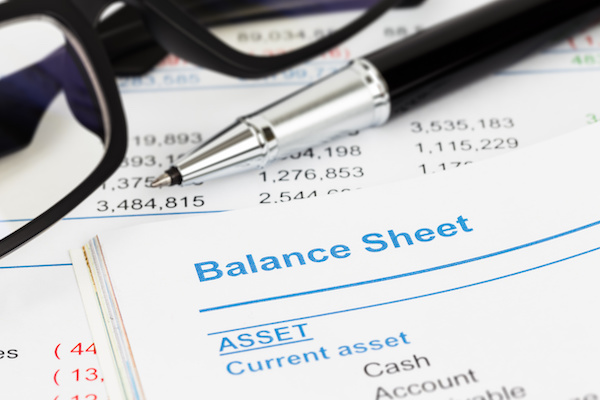
Warren Buffett reportedly reads 500 pages a day, mostly annual reports. For most non-professional investors that’s impossible given all the other things going on in their lives. Yet any investor can benefit from looking at financial statements to find the key numbers for companies whose stocks they hold in their portfolio.
One of the most important numbers for analyzing a company is the return on common equity. In this article, we’ll start by reviewing the formula for this financial ratio and then we’ll explore how to use that number, as well as some additional financial metrics.
What Is Return on Common Equity?
Before we dive into the formula, we need to get some definitions right:
- Common stockholders are holders of regular shares. This specifically excludes holders of preferred stocks, which are a special kind of shares that usually have fixed preferred dividends and no voting rights.
- Common equity is the ownership of assets. This is what common stockholders own. This could be thought of as the company’s net worth. This information is found in the company’s balance sheet.
- Net income is the company’s profit as recorded in its financial statements.
Now we can combine these concepts in the formula for return on common equity (or ROCE):
Return on common equity = (Net Income – Preferred dividends) / Common Equity
Expressed in percentages, this is the rate of return that common stockholders get if they acquired stocks at par value, which is recorded in the balance sheet.
We subtract preferred dividends from net income because by definition these dividends are not part of the returns that accrue to regular stockholders.
Some formulas and applications use average common equity. This is because common shareholders’ equity is not a fixed number and can change, for example, if a company sells additional stock.
It’s easier to understand the formula with an example.
Example of Return on Common Equity
Let’s look at Apple (NASDAQ:AAPL), the company with the largest cash balance in the world.
In 2021, Apple reported a net income of $57.4 billion. It doesn’t have any preferred stock. Its common stock’s value on the balance sheet is $50.7 billion.
By putting this together we get a return on common equity of 113% = $57.4 billion / $50.7 billion.
Of course, that’s not the return you’d get if you bought shares on the market. Stocks almost always trade at a premium to the arbitrary par value recorded in the balance sheet.
To put this premium in perspective, Apple’s market capitalization as of October 2021 is $2.37 trillion. If you divide the net income by market cap, you would get a return of just 2.4%. And the dividend yield is even lower: 0.62%.
Now let’s see why you might still want to use the return on equity ratio.
How to Use Return on Common Stockholders’ Equity

Return on common equity helps us to understand the profitability of a company. You can think of it as a return on investment as if you already had equity in the company.
Return on equity is also similar to earnings per share or EPS, which is a great way of tracking earnings across time. Yet because EPS depends on the number of shares, it’s not easily comparable across different companies.
Meanwhile, rates of return are expressed as percentages and are easier to compare.
All else being equal, a company with a higher return on common equity would be a more profitable business. A company that can generate a high return should be able to afford dividend payouts or reinvest into further growth. Ideally, the share price will reflect that.
Of course, nothing is ever equal when it comes to comparing different companies, even if they operate in the same industry and sector.
To get a more nuanced comparison, it’s important to look at what makes up the formula:
- Sources of income: If a company gets interest or investment income, this might temporarily boost net income. This would result in a higher return on equity. So investors focus on examining operating income from core business activities.
- The nature of expenses: Cutting expenses might also increase net income. Yet it’s not wise to skimp on some costs, such as research and development or marketing.
- Debt: Some management teams can juice up shareholders’ returns by taking on more debt. One way to do that is to acquire competitors with borrowed cash. Then the acquired company’s net income would show up on the buyer’s future income statements. If the buyer’s stockholder equity remains the same, the return on equity would go up.
Also, keep in mind that return on common equity doesn’t tell you anything about cash flows. While the company might be making money on paper (for example, if it has a lot of accounts receivable), it doesn’t necessarily mean that it has the cash to pay the dividends. This is one of the reasons why it’s important to look beyond just the return on equity.
4 Additional Financial Metrics

Like any other financial ratio, return on common equity should not be used in isolation.
Instead, you can combine several financial metrics to paint a more complete picture of the company’s profitability.
- Return on assets (ROA): The formula is almost the same as for ROCE, but instead of dividing by common equity, you divide by net assets, which you can also find on the company’s balance sheet. ROA can help you determine how good the company is at using assets to generate profits.
- Return on capital employed: Instead of using net income, this ratio divides Earnings Before Interest and Tax (EBIT) by the company’s capital, i.e. total assets minus current liabilities This ratio helps to eliminate the effects of debt from profitability.
- Asset turnover: This is total revenue divided by average assets. This ratio helps to explain how much sales a company produces from its assets each financial year.
- Net profit margin: Divide net income by revenue. This is probably the most important metric because it shows how much profit the company gets from its sales. If a company has high margins, it will likely be able to deliver high rates of returns. Yet in a competitive market, maintaining high margins isn’t easy.
Let’s use Apple from our earlier example to illustrate these financial ratios:
- The return on assets is $57.4 billion / $323.8 billion = 17.7%. This is a lot more realistic than the 113% ROCE we got earlier.
- Return on capital employed is $67 billion / ($323 billion – $105 billion) = 31%.
- Asset turnover is $274 billion / $323 billion = 85%. Every year, Apple generates sales that are more than three-quarters of its assets on the balance sheet.
- Net profit margin is $57.4 billion / $274 billion = 21%. This means that $200 from each $1,000 in sales are profit.
As you can see, none of these ratios is based on the share price.
This is because for fundamental investors the share price is secondary. Instead, they think about shares as owning a part of the business. First, they identify a great business and then start looking at the share price to determine if it’s a good deal.
Apply Return on Common Equity to Your Portfolio Holdings
In this article, we started by reviewing the formula for return on common equity and defining different elements of it. After that, we looked at how this formula is used and what to pay extra attention to when using it. Finally, we’ve explored four additional financial metrics that can give you a better understanding of a business.
These financial ratios form the basis of fundamental research, which is key to finding high-quality dividend stocks that could be the backbone of your retirement. Yet you don’t need to do this alone. Editors at Investors Alley do that work all day long, and you can see their findings by subscribing to Investors Alley’s Dividend Hunter newsletter.





